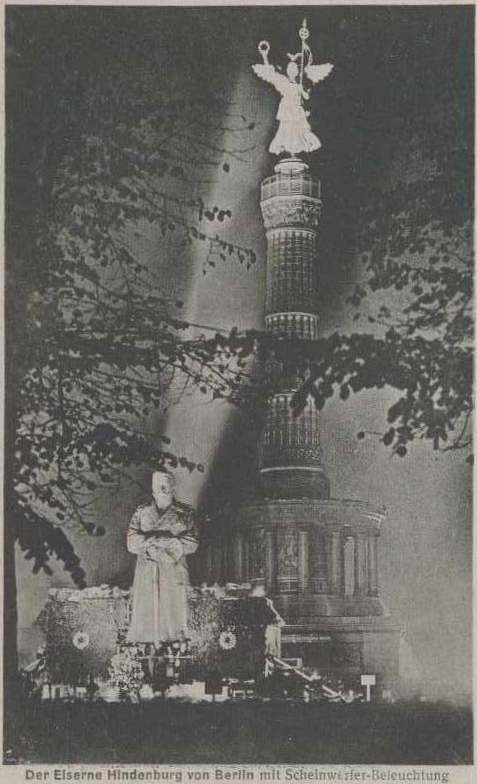One of the more interesting aspects of the First Word War was how quickly the German population began to worship at the temple of Field Marshall Paul von Hindenburg.
The adoration of the Field Marshall began after the victory at Tannenberg and subsequent victories against the Russians. He was built up as a national hero - something that was actively encouraged by the German General Staff to distract attention away from the tiny fact that the much heralded Schlieffen Plan was failing miserably in the west.
Significantly, it was Hindenburg and not the Kaiser who became the focus of the German people. As the war progressed and the civilian population became increasingly disillusioned, the German government used his image more and more in propaganda - positioning him as the father figure who would continue to throw back any potential invaders of the Fatherland.

One of the more unusual propaganda creations were the the Nail Men (Nagelmänner) which were wooden statues (usually of knights in armour) into which iron nails were driven in exchange for donations to the war effort. Iron had a significant role in German culture at the time; Bismark, the creator of a unified Germany in the late 1800's was know as the 'Iron Chancellor' and one of the most iconic of military awards is the German Iron Cross.
Not surprisingly, a huge (12m high) wooden state of Hindenburg was erected in Berlin on 4th September 1915 with Princess August Wilhelm hammering in the first nail. By the end of the war 1.15million Marks were raised for the war effort by Berliners hammering in nails.
After the war the statue was sold for firewood.


Comments